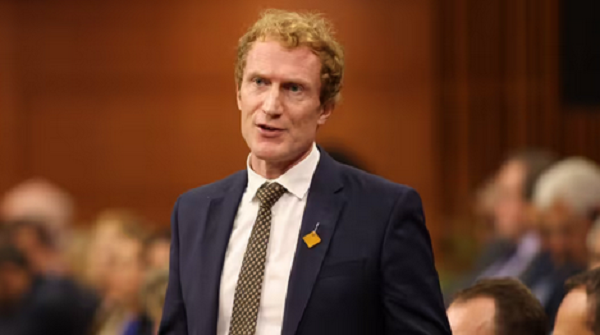How long can Canadians resist the temptation to spend as interest rate comes down?
Canadians have been socking away money at a frantic pace to cope with higher interest rates, but with hundreds of billions of dollars sitting on the sidelines and interest rates coming down, one economist questions how long Canadians can resist the temptation to spend.
Canada’s savings rate, which reflects net savings as a share of household disposable income, has risen steadily since mid-2022, reaching 7.2 per cent in the second quarter, the highest level, outside of the pandemic period, in nearly 30 years. That’s a contrast to the U.S., where the savings rate has plunged compared to before the pandemic.
Canadian and U.S. households have switched places, and that helps explain why the U.S. economy is outperforming. American consumers are spending while Canadians have hunkered down.
But for how long? In May, Derek Holt, an economist at Bank of Nova Scotia, estimated households were sitting on excess savings of $400-billion when compared to what the prepandemic savings trend would have suggested. This week, he updated that analysis. The savings stockpile by that measure has risen to $470-billion.
Ahead of Wednesday’s decision by the Bank of Canada to cut its benchmark interest rate by a quarter of a percentage point, to 4.25 per cent, Mr. Holt warned that if the bank gets too aggressive as it brings down interest rates it “could unleash a tsunami of consumer and housing demand given how high excess savings and pent-up demand are becoming.”
Canadian homeowners have been warned to prepare for a steep jump in payments when it comes time to renew mortgages that were taken out when interest rates were low and, if that happens, households may need to drain their savings stockpile to cover increased monthly payments. However, Mr. Holt writes that nearly two-thirds of households don’t have a mortgage, while the remainder with mortgages have so far weathered rate increases and reset risks are falling with bond yields forecast to ease.
It should be said household savings aren’t distributed evenly. Middle- and higher-income household have likely socked away a large share of total savings and those with higher incomes have a lower propensity to spend.
Still, with households sitting on $2.2-trillion in the first quarter, according to Statistics Canada, up almost 50 per cent from the same period five years ago (not adjusting for inflation) it could put the prudence of Canadian households to the test.
This article was first reported by The Globe and Mail













